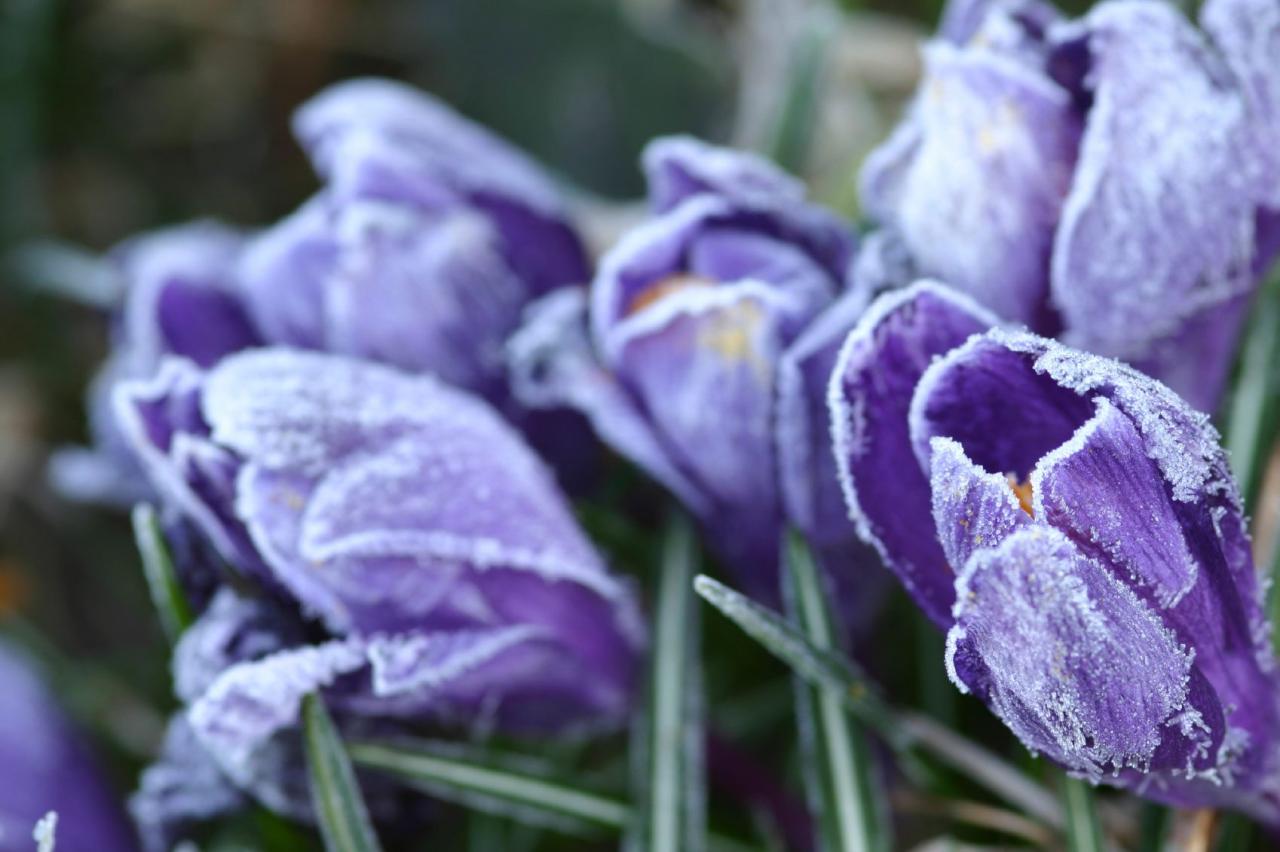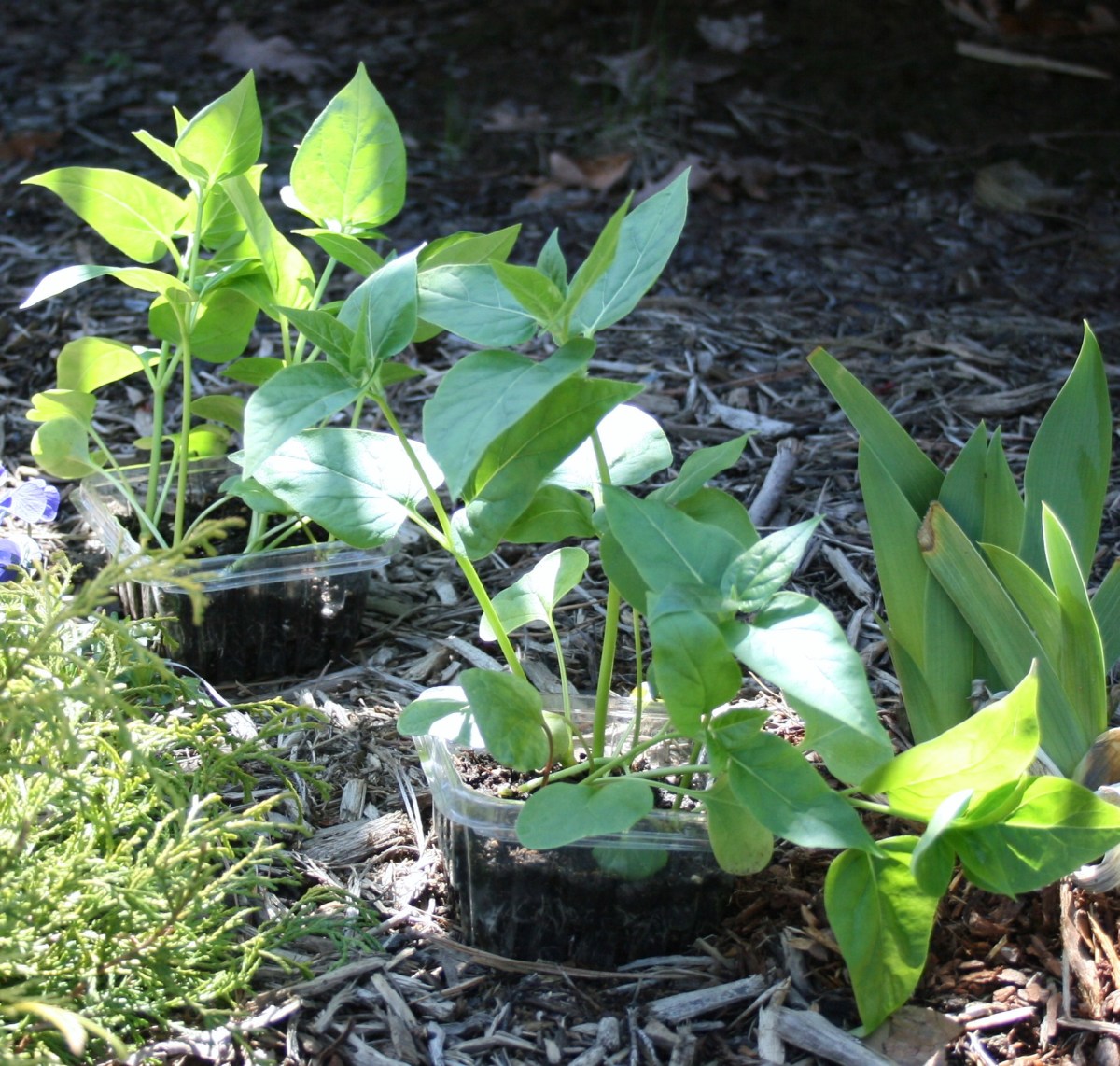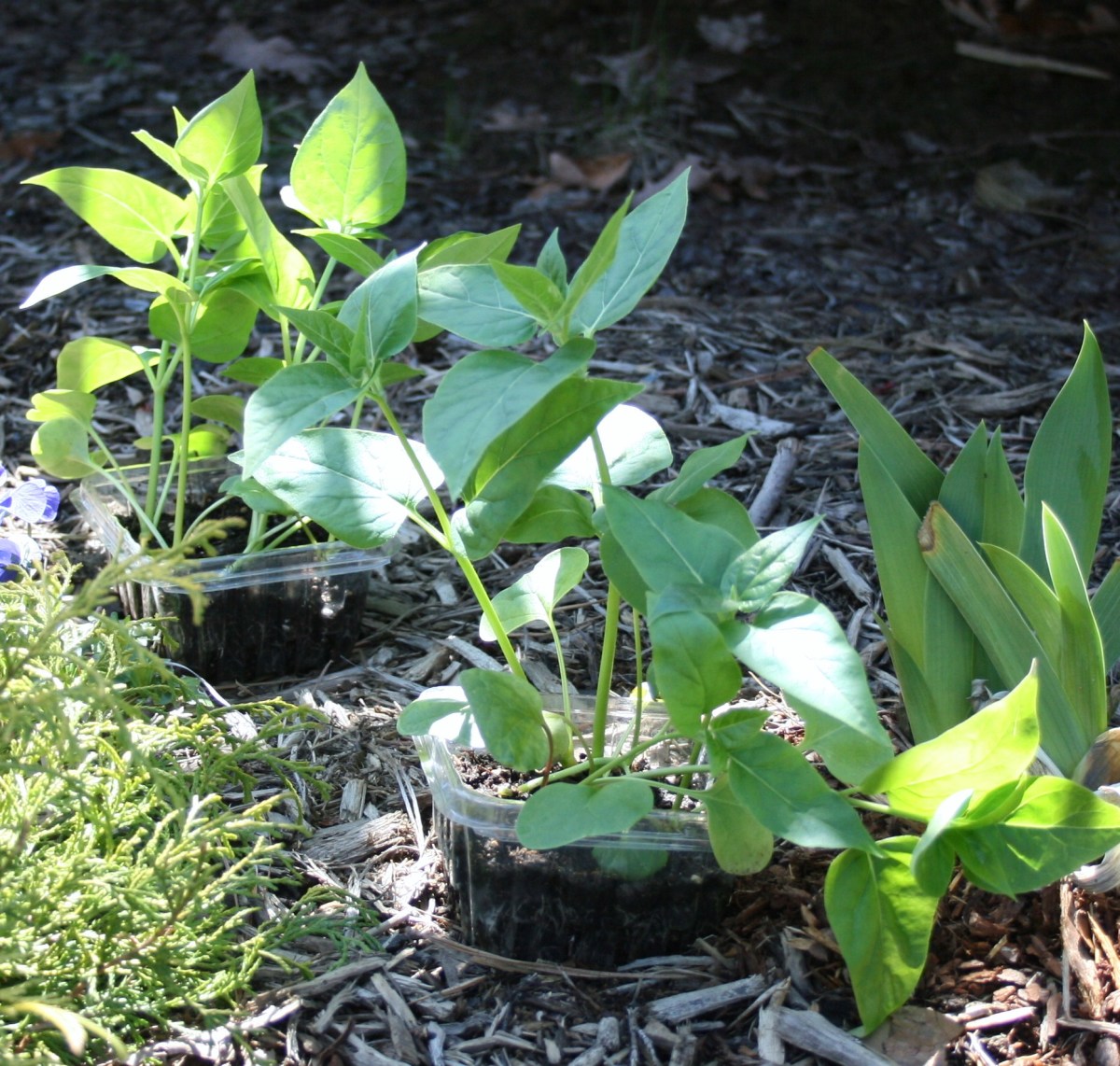How To Protect Your Spring Bulbs From Frost When Planting In Fall is a crucial aspect of successful gardening, especially in regions with unpredictable fall weather. Planting bulbs in autumn offers numerous advantages, including a head start on the growing season and a more vibrant display of blooms the following spring.
However, the risk of frost damage looms large, threatening to hinder your efforts and leave you with disappointing results.
Understanding the intricacies of frost protection is essential to ensure the survival and thriving of your beloved spring bulbs. This guide will equip you with the knowledge and techniques needed to safeguard your bulbs against the harsh realities of winter weather.
From selecting the appropriate planting depth to utilizing effective frost protection methods, we’ll cover all the essential steps to ensure your bulbs emerge healthy and vibrant come springtime.
Understanding Fall Planting and Frost Risks: How To Protect Your Spring Bulbs From Frost When Planting In Fall

Fall planting offers numerous benefits for spring-blooming bulbs, including allowing them to establish a strong root system before spring’s growth spurt. However, planting bulbs in the fall also exposes them to potential frost damage, particularly in regions with harsh winters.
Frost Risks Associated with Fall Planting, How To Protect Your Spring Bulbs From Frost When Planting In Fall
The risk of frost damage to bulbs varies significantly depending on the region’s climate and the specific bulb species. Bulbs planted in regions with mild winters are less susceptible to frost damage than those planted in areas with harsh winters and frequent temperature fluctuations.
- Regions with Mild Winters:In regions with mild winters, where temperatures rarely drop below freezing, frost damage is less likely. However, it’s still important to monitor the weather and protect bulbs from sudden cold snaps.
- Regions with Harsh Winters:In regions with harsh winters, where temperatures frequently drop below freezing, frost damage is a significant concern. Bulbs planted in these regions require extra protection to ensure their survival.
Signs of Frost Damage on Bulbs
Frost damage can manifest in various ways, depending on the severity of the frost and the bulb species. Here are some common signs of frost damage on bulbs:
- Wilting or Yellowing of Foliage:Frost can damage the leaves and stems of bulbs, causing them to wilt or turn yellow.
- Soft or Mushy Bulbs:Frost can cause the bulbs themselves to become soft or mushy, indicating significant damage.
- Failure to Bloom:Frost damage can prevent bulbs from flowering in the spring, even if the bulbs themselves appear healthy.
Protective Measures for Fall-Planted Bulbs
Protecting fall-planted bulbs from frost is crucial for ensuring their survival and a bountiful bloom in the spring. Understanding the right planting techniques and protective measures can significantly improve their chances of thriving even during harsh winter conditions.
Planting Depth for Different Bulb Types
The depth at which you plant bulbs plays a significant role in their frost protection. Planting too shallowly exposes bulbs to freezing temperatures, while planting too deeply can hinder their emergence in spring. The general rule of thumb is to plant bulbs at a depth of two to three times their height.
However, this can vary depending on the specific type of bulb.
- Small Bulbs: These include grape hyacinths, crocuses, and snowdrops. They typically require a planting depth of 2-3 inches.
- Medium Bulbs: These include tulips, daffodils, and hyacinths. They usually require a planting depth of 4-6 inches.
- Large Bulbs: These include lilies and alliums. They often need a planting depth of 6-8 inches.
Importance of Soil Drainage
Well-drained soil is essential for protecting bulbs from frost damage. Waterlogged soil can freeze solid, damaging the bulbs and hindering their ability to survive the winter.
“Ensure the soil is free-draining to prevent water from accumulating around the bulbs during winter.”
To improve soil drainage, consider adding amendments such as compost or sand. You can also create raised beds or plant bulbs on slopes to allow excess water to drain away.
Benefits of Using Mulch
Mulch provides a protective layer over the bulbs, insulating them from extreme temperature fluctuations and protecting them from frost damage. It also helps to retain moisture in the soil, which is beneficial for the bulbs during the winter months.
- Organic Mulch: This includes materials such as straw, leaves, bark chips, and shredded wood. Organic mulch decomposes over time, adding nutrients to the soil.
- Inorganic Mulch: This includes materials such as gravel, pebbles, and landscape fabric. Inorganic mulch does not decompose and can last for a longer time. However, it does not add nutrients to the soil.
When applying mulch, ensure that it is spread evenly over the planting area, but do not cover the emerging shoots of the bulbs. The mulch layer should be around 2-4 inches thick.
Additional Protection Techniques

While the previously mentioned methods provide a good baseline for frost protection, additional measures can further enhance your bulbs’ chances of survival during harsh winters. These techniques are especially beneficial in regions with particularly cold climates or unpredictable weather patterns.
Comparing Frost Protection Methods
A range of frost protection methods offer varying levels of effectiveness, depending on the severity of the frost and the specific requirements of your bulbs. Here’s a breakdown of popular options:
Method |
Pros |
Cons |
|---|---|---|
Row Covers |
Lightweight and breathable, allowing some sunlight and moisture penetration. Relatively inexpensive. Easy to apply and remove. |
Less effective in extreme cold. May need to be reinforced in high winds. |
Burlap Sacks |
Provide good insulation and moisture retention. Relatively inexpensive and readily available. |
Heavy and can become waterlogged. May not be as breathable as other options. |
Straw Bales |
Excellent insulation and moisture retention. Effective in extreme cold. |
Can be bulky and difficult to apply. May harbor pests or diseases. |
Using Winterizing Solutions for Bulb Protection
Winterizing solutions can provide an extra layer of protection for your bulbs, particularly against harsh winter conditions. These solutions typically contain ingredients that help prevent moisture loss, reduce freezing temperatures, and promote healthy growth.
Common winterizing solutions include:
– Anti-desiccant sprays: These sprays form a protective barrier around the bulbs, reducing moisture loss and preventing freezing.
– Liquid fertilizers: Applying a diluted liquid fertilizer in fall can provide essential nutrients to the bulbs, boosting their winter hardiness.
Monitoring and Care After Planting

After planting your bulbs, regular monitoring is crucial to ensure their health and protect them from frost damage. This involves assessing the weather conditions and adjusting protective measures as needed.
Assessing Frost Risk and Adjusting Protective Measures
Regularly checking the weather forecast is essential, particularly during the early fall and late winter months. Monitoring the predicted low temperatures and potential frost events will help you determine the need for additional protection.
- Light Frost:If a light frost is predicted, covering the bulbs with a layer of mulch or burlap can be sufficient. This provides a barrier against the cold and helps maintain soil temperature.
- Heavy Frost:For heavy frost events, consider using a frost blanket or row cover. These materials are specifically designed to trap heat and protect plants from freezing temperatures.
- Unpredictable Weather:In unpredictable weather, it’s best to err on the side of caution and provide extra protection. You can always remove the protective measures if the weather turns warmer.
Supplemental Watering During Winter Months
While bulbs are dormant during winter, they still require some moisture. The soil should not be completely dry, especially during prolonged periods of cold or drought.
- Deep Watering:Water your bulbs deeply but infrequently during winter. This allows the water to penetrate the soil and reach the bulbs’ roots.
- Avoid Overwatering:Overwatering can lead to root rot, so ensure the soil is well-drained.
- Monitoring Soil Moisture:Check the soil moisture regularly, especially during dry spells. You can use a moisture meter or simply feel the soil with your fingers.
Common Mistakes to Avoid
Protecting your spring bulbs from frost during fall planting is essential for their successful growth and blooming in the spring. While following the proper steps Artikeld in the previous sections is crucial, there are common mistakes gardeners make that can compromise their efforts.
Understanding these mistakes and how to avoid them is vital for ensuring your bulbs thrive.
Overwatering
Overwatering is a common mistake that can lead to bulb rot and fungal diseases. While bulbs need adequate moisture to establish roots, excessive watering can create a waterlogged environment that suffocates the bulbs.
- Signs of Overwatering:Yellowing leaves, wilting, and a mushy or soft feel to the bulbs are indicators of overwatering.
- Tips for Avoiding Overwatering:
- Water deeply but infrequently, allowing the soil to dry slightly between waterings.
- Choose well-draining soil and ensure good drainage in your planting area.
- Monitor the weather and adjust watering frequency accordingly.
Over-Mulching
Mulching is beneficial for protecting bulbs from frost, but over-mulching can create an environment that is too warm and humid, leading to fungal diseases and pest problems.
- Signs of Over-Mulching:Mold growth on the mulch or bulbs, stunted growth, and yellowing leaves.
- Tips for Avoiding Over-Mulching:
- Apply a thin layer of mulch, typically 2-4 inches deep, around the bulbs.
- Use organic materials like shredded bark, wood chips, or compost for mulching.
- Remove any excess mulch in the spring once the soil has warmed up.
Improper Timing for Planting and Frost Protection
Planting bulbs too early or too late can increase the risk of frost damage. Planting too early exposes the bulbs to harsh conditions, while planting too late can prevent them from establishing roots before the ground freezes.
- Consequences of Improper Timing:Frost damage to bulbs, stunted growth, and failure to bloom in the spring.
- Tips for Avoiding Timing Mistakes:
- Consult your local planting calendar for the recommended planting dates for your region.
- Consider the average first frost date and last frost date in your area when planning your planting schedule.
- If you are unsure about the best time to plant, err on the side of caution and plant slightly later rather than too early.
Ultimate Conclusion
By understanding the benefits and risks of fall planting, implementing appropriate protective measures, and diligently monitoring your bulbs, you can confidently plant your spring bulbs in the fall and reap the rewards of a stunning floral display the following year.
Don’t let frost deter your gardening dreams – embrace the knowledge and techniques Artikeld in this guide to ensure a successful and vibrant spring bloom.
Common Queries
What are the best types of bulbs to plant in the fall?
Popular fall-planted bulbs include tulips, daffodils, hyacinths, crocuses, and allium. These bulbs thrive with a period of cold dormancy, which is provided by the winter months.
Can I use a single frost protection method for all bulbs?
While some methods, like mulch, are generally effective, the best approach is to tailor your frost protection strategy based on the specific bulb type and your local climate. For example, delicate bulbs like crocuses may require additional protection beyond mulch.
